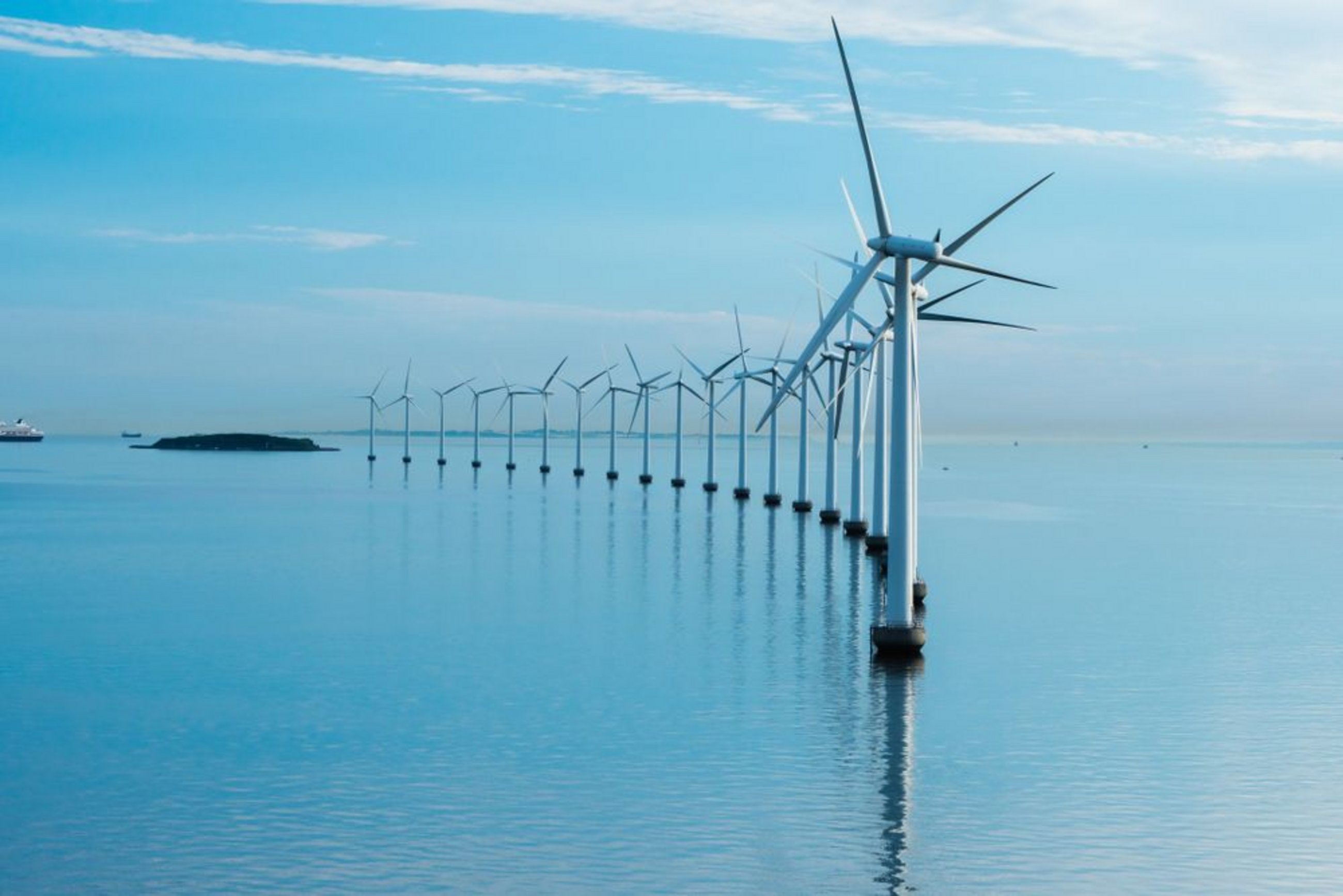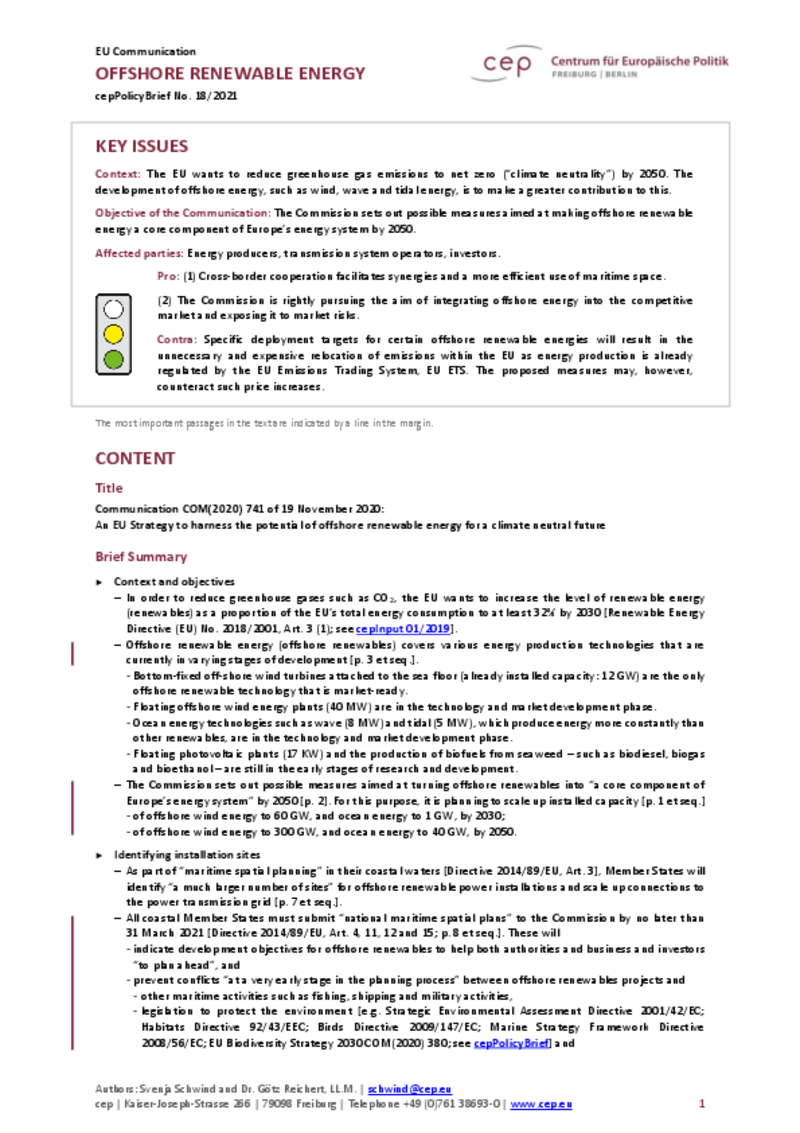
Climate
Offshore Renewable Energy (cepPolicyBrief COM2020 741)
cepPolicyBrief
“Cross-border cooperation could generate synergies and facilitate more efficient use of maritime space,” says cep lawyer Götz Reichert, who co-authored the cepPolicyBrief together with cep economist Svenja Schwind.
According to Reichert, cross-border hybrid offshore renewables projects could support both the scaling up of offshore renewables capacity and the cross-border trade in electricity within the EU. “The Commission’s plans are rightly pursuing the aim of integrating offshore renewables into the competitive market and exploiting market risks” agrees Schwind.
However, the cep researcher also warns about the risk of carbon leakage: “Specific deployment targets will result in the unnecessary and expensive relocation of emissions within the EU as energy production is already regulated by the EU Emissions Trading System, EU ETS”, says Schwind. Maritime spatial plans should identify sufficient area to enable the deployment of offshore renewables. Offshore electricity production will be increased to 300 gigawatts, and ocean energy to 40 gigawatts, by 2050.
Download PDF
| cepAnalyse (publ. 08.24.2021) | 207 KB | Download | |
 | |||




